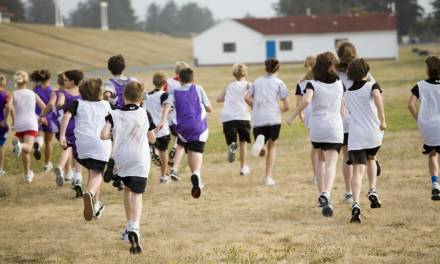The expectations for teachers to deliver in an ever-increasingly results-driven work setting have never been so demanding, meaning the extreme stress levels experienced and felt by many teachers has made for a hot topic of discussion in recent years.
As Kevin Courtney, General Secretary for the NUT, said during the debate on Motion 22 at the NUT Conference (18th April 2017):
Unmanageable workloads, brought about through endless assessment, performance related pay and Ofsted, are creating a toxic environment in schools
Surely schools need to do more to actively support their staff to achieve a healthy work-life balance and engage in more physical activity to achieve improved physical, mental social and emotional wellbeing.
Or are you as lucky as I am to work in a school that goes above and beyond and actively seek opportunities to develop your health and wellbeing?
Staff health and wellbeing
Having observed professionals exploring the huge variety of interventions available to support staff with their health & wellbeing, I find it hard to believe that more haven’t looked a little closer to home to find the answer that could be key to creating a positive bond among staff, while also supporting them physically, mentally, socially and emotionally.
A Twitter poll I conducted in October 2017 reported that 56% of the 236 responses worked in schools that did not offer a single fitness or physical activity for staff as part of their school PE extra-curricular timetable.
I found this very surprising and really do believe that schools are missing a trick here. I mean, it is cost-effective, easy to access, and readily available through the schools PE teaching staff and sport facilities.
Kathryn Lovewell’s article for the Teacher Development Trust (2013) states that “stress weakens the immune system. Low immune system means sickness, Sickness leads to teacher absence.” So surely it is within the interest of the school to actively support and manage teaching staff stress levels.
Activities for staff
On the face of it, some schools are already tapping into this in-house resource. Of the sample of Twitter poll responses, 32% of teachers reported to having access to such activities once a week, which included swimming, cross-fit, yoga, insanity fitness sessions, dodgeball, volleyball and football.
Each reported that staff enjoy these activities which I imagine offer a great topic for discussion and reflection in the staff room from one week to the next.
So, an ‘easy win’ seems very simple for many – offer a sports club to staff in school once a week!
Unsurprisingly, I urge more schools to acknowledge the contribution the PE team can have on the health and wellbeing of staff in schools.
I encourage schools to utilise them as a resource to support staff across the school in being happy and healthy members of the team. This does not even need to come at the detriment of the working time of PE staff.
Each week we offer a vast range of activities to our students that staff could simply come along and join in with themselves.
They offer these opportunities to students for the exact same reason that they are required for staff, which is to develop their engagement in physical activity, social and practical skills, not to mention leadership, teamwork…the list is almost endless.
Exercise to reduce stress and improve performance
NHS Live Well guidance urges people to participate in exercise for the associated physical, mental, emotional and social benefits associated with being physically active.
Research also shows that how teaching staff feel is likely to affect their performance, which in turn, is likely to affect the performance of their students.
A study into links between staff wellbeing and school performance (Briner & Dewberry 2007) concluded that a healthy work/life balance can lead to happier, motivated members of staff, ultimately leading to students also feeling happier, motivated and confident to learn, which I believe can only lead to positive outcomes for all.
As Kathryn Lovewell (2013) put it, wellbeing for staff is “living life well, developing ourselves and our full potential, developing relationships with ourselves and others and contributing to our society, our world. This is flourishing.”
Don’t get me wrong. I don’t think this simple idea is the answer to all our staff health and wellbeing issues in school. However, it is a readily available, affordable and achievable cog to add to the bigger wheel of motion schools should consider in developing overall staff health and wellbeing.
I encourage your school to work closely with their PE department to explore the opportunities for all staff to positively engage in physical activity and support them to flourish in their teaching and overall health and wellbeing.
Rob has been a PE teacher for almost 10 years and has recently been appointed to the school leadership team at Flixton Girls School in Trafford as the Director of Culture & Ethos.










